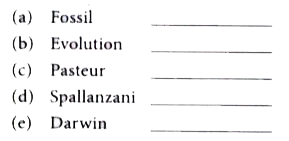Changing population is -
Population growth
Population dynamics
Population explosion
Population ethology
The correct Answer is:B
Step-by-Step Solution:
1. Understanding the Concept of Population Change:
- Population change refers to the variation in the number of individuals in a population over a specific period of time. This can be influenced by various factors such as birth rates, death rates, immigration, and emigration.
2. Factors Influencing Population Change:
- Birth Rate: The number of births in a population over a specific time period contributes positively to population growth.
- Death Rate: The number of deaths in a population over a specific time period contributes negatively to population growth.
- Immigration: The arrival of individuals from outside the population can increase the population size.
- Emigration: The departure of individuals from the population can decrease the population size.
3. Calculating Population Change:
- To determine the change in population over a year, we can use the formula:
Population Change=Population at End of Year−Population at Start of Year=Y−X
- Here, X is the population at the beginning of the year and Y is the population at the end of the year.
4. Possible Outcomes of Population Change:
- The population can either:
- Increase (due to high birth rates and immigration)
- Decrease (due to high death rates and emigration)
- Remain constant (when the number of births equals the number of deaths, and immigration equals emigration)
5. Conclusion:
- The term that encompasses all these changes in population over time is referred to as population dynamics. Therefore, the correct answer to the question "What is the changing population?" is population dynamics.
- Population change refers to the variation in the number of individuals in a population over a specific period of time. This can be influenced by various factors such as birth rates, death rates, immigration, and emigration.
- Birth Rate: The number of births in a population over a specific time period contributes positively to population growth.
- Death Rate: The number of deaths in a population over a specific time period contributes negatively to population growth.
- Immigration: The arrival of individuals from outside the population can increase the population size.
- Emigration: The departure of individuals from the population can decrease the population size.
- To determine the change in population over a year, we can use the formula:
Population Change=Population at End of Year−Population at Start of Year=Y−X
- Here, X is the population at the beginning of the year and Y is the population at the end of the year.
- The population can either:
- Increase (due to high birth rates and immigration)
- Decrease (due to high death rates and emigration)
- Remain constant (when the number of births equals the number of deaths, and immigration equals emigration)
- The term that encompasses all these changes in population over time is referred to as population dynamics. Therefore, the correct answer to the question "What is the changing population?" is population dynamics.
Similar Questions
Give the formula for the change in population size .
View SolutionGiven below are the following terms (letters) with their appropriate definition numbered items).

(i) Boiled broth experiment gave rise to the process. (ii). Trace of a dead organism. (iii) Used swan-necked flask to disprove theory of spontaneous generation. (iv) Change in population over time. (v) Wrote "The origin of species' book.
View Solution
Knowledge Check
Change in population size equation with prolonged exponential phase can be converted into logistic growth equation by multiplying it with
AK/NBK−N/KCK/K-ND1/N-KThe change in population size at a given time interval t , is given by the expression
Nt=N0+B+I−D−E
I , B and D stand respectively forAa rate of immigration , mortality rate, natality rateBrate of emigration , natality rate , mortality rateCmortality rate , rate of immigration , natality rateDrate of immigration , natality rate , mortality rateIn change in population size, Nt = N0 + B + I - D - E. What do I, B, D stand for?
AImmigration, mortality, natalityBImmigration, natality, mortalityCEmigration, natality, mortalityDMortality, natality, immigration
How did long-term changes in population levels affect economy and society in Europe?
View SolutionIn change in population size, Nt = N0 + B + I - D - E. What do I, B, D stand for?
View SolutionGradual change in population characteristics over a geographical area associated with change in environment is:
View SolutionThe per individual change in a population due to natality can be estimated by using (Here, ΔNn) =New individuals , N=initial populations , Δt=change in time)
View SolutionIn a random mating population in equilibrium, which of the following brings about a change in gene frequency in a non-directional manner?
View Solution
